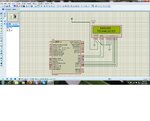venthan
Junior Member level 3

Hi Seniors,
I am new to programming. Just starting to learn the coding. I am using PIC16F887 Micro controller. I successfully simulated the program with PROTEUS. Now the problem comes when I trying to implement it in HARDWARE mode.
I want to know the configuration code for selecting internal oscillator. And If possible please explain how to select configuration codes for various micro controllers.
I am using MPLAB Software , Hi tech compiler. Please help me out from this issue.
Thanks in advance,
Koventhan.
I am new to programming. Just starting to learn the coding. I am using PIC16F887 Micro controller. I successfully simulated the program with PROTEUS. Now the problem comes when I trying to implement it in HARDWARE mode.
I want to know the configuration code for selecting internal oscillator. And If possible please explain how to select configuration codes for various micro controllers.
I am using MPLAB Software , Hi tech compiler. Please help me out from this issue.
Thanks in advance,
Koventhan.

